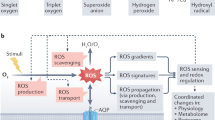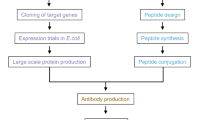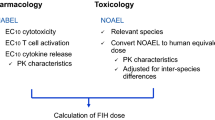Abstract
EARLY studies by Landsteiner1 indicated that while plant agglutinins acted upon the red cells of most species, specificity could be considered to exist if the action of a given plant extract against a limited series of cells was considered. For example, lentil extracts agglutinated rabbit's red cells but not pigeon's red cells. Recent experiments2 revealed that extracts of common strains of Dolichos biflorus agglutinated human A cells quickly and sheep's cells after 5 min., but not human cells of groups B and O, or those of some other species.
This is a preview of subscription content, access via your institution
Access options
Subscribe to this journal
Receive 51 print issues and online access
$199.00 per year
only $3.90 per issue
Buy this article
- Purchase on SpringerLink
- Instant access to full article PDF
Prices may be subject to local taxes which are calculated during checkout
Similar content being viewed by others
References
Landsteiner, K., “The Specificity of Serological Reactions” (Cambridge, Mass., 1947).
Bird, G. W. G., J. Immunol., 69, 319 (1952).
Boyd, W. C., and Reguera, R. M., J. Immunol., 62, 333 (1949).
Liener, I. E., and Pallansh, M., J. Biol. Chem., 197, 29 (1952).
Author information
Authors and Affiliations
Rights and permissions
About this article
Cite this article
BIRD, G. Some Interrelationships of the Erythrocytes of Various Species with Plant Agglutinins. Nature 172, 401–402 (1953). https://doi.org/10.1038/172401a0
Issue date:
DOI: https://doi.org/10.1038/172401a0
This article is cited by
-
Reactivity of purified lectins with blood typed canine erythrocytes
Comparative Haematology International (1993)
-
Reactivity of seed lectins with blood-typed canine erythrocytes
Comparative Haematology International (1992)
-
Seed hemagglutinins
Economic Botany (1964)



